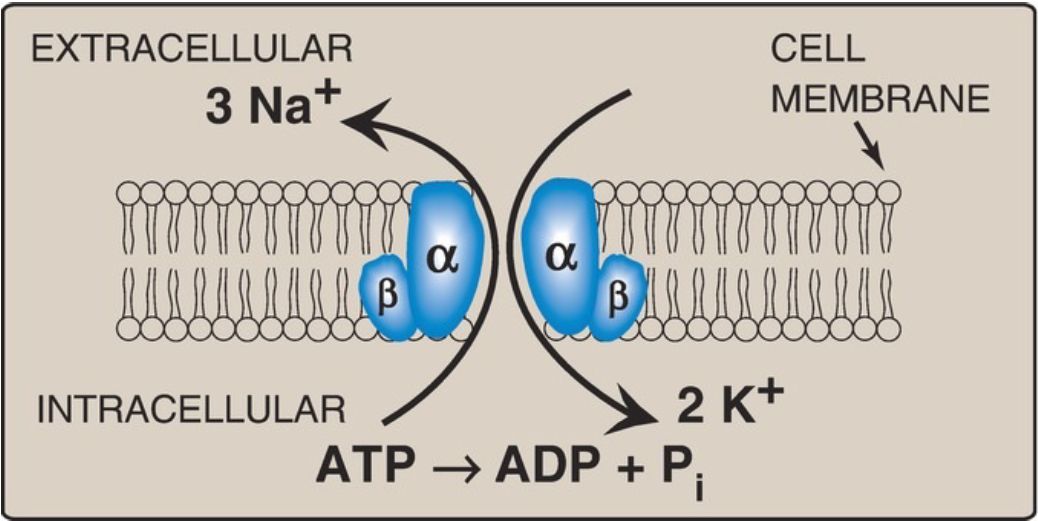
Macrominerals : Sodium, chloride, and potassium
 المؤلف:
Denise R. Ferrier
المؤلف:
Denise R. Ferrier
 المصدر:
Lippincott Illustrated Reviews: Biochemistry
المصدر:
Lippincott Illustrated Reviews: Biochemistry
 الجزء والصفحة:
الجزء والصفحة:
 16-12-2021
16-12-2021
 1446
1446
Macrominerals : Sodium, chloride, and potassium
These macrominerals are considered together because they play important roles in several physiologic processes. For example, they maintain water balance, osmotic equilibrium, acid–base balance (pH), and the electrical gradients across cell membranes (membrane potential) that are essential for the functioning of neurons and myocytes.
1. Sodium and chloride: Na+ and Cl− are primarily extracellular electrolytes. They are readily absorbed from foods containing salt (NaCl), much of which comes from processed foods. [Note: Na+ is required for the intestinal absorption (and renal reabsorption) of glucose and galactose and free amino acids by Na+-linked transporters. Cl− is used to form hydrochloric acid required for digestion .] In the United States, the average daily consumption of NaCl is 1.5–3 times the adequate intake (AI) of 3.8 mg/day (UL = 5.8 g/day). Dietary deficiency is rare.
a. Hypertension: Na+ intake is related to blood pressure (BP). Ingestion of Na+ stimulates thirst centers in the brain and secretion of antidiuretic hormone from the pituitary, leading to water retention. This results in an increase in plasma volume and, consequently, an increase in BP.
Chronic hypertension can damage the heart, kidneys, and blood vessels. Modest reductions in Na+ intake have been shown to result in modest reductions in BP. [Note: Some populations (for example, African Americans) are “salt sensitive” and have larger responses to Na+.]
b. Hyper- and hyponatremia: Hypernatremia, typically caused by excess water loss, and hyponatremia, typically caused by decreased ability to excrete water, can result in severe brain damage. [Note: Chronic hyponatremia increases Ca2+ excretion and can result in osteoporosis (low bone mass).]
2. Potassium: In contrast to Na+, K+ is primarily an intracellular electrolyte. [Note: The concentration differential of Na+ and K+ across the cell membrane is maintained by the Na+/K+ ATPase (Fig. 29.4).] In contrast to Na+ and Cl−, K+ (like Mg2+) is underingested in Western diets because its primary sources, fruits and vegetables, are underingested. [Note: Increasing dietary K+ decreases BP by increasing Na+ excretion.] There is a narrow range for normal serum K+ levels, and even modest changes (up or down, resulting in hyper- or hypokalemia) can result in cardiac arrhythmias and skeletal muscle weakness. [Note: Hypokalemia can result from the inappropriate use of laxatives to lose weight.] No UL for K+ has been established.

Figure 1: Na+/K+ ATPase. Na+ = sodium; K+ = potassium; ADP = adenosine diphosphate; Pi = phosphate.
 الاكثر قراءة في الكيمياء الحيوية
الاكثر قراءة في الكيمياء الحيوية
 اخر الاخبار
اخر الاخبار
اخبار العتبة العباسية المقدسة


